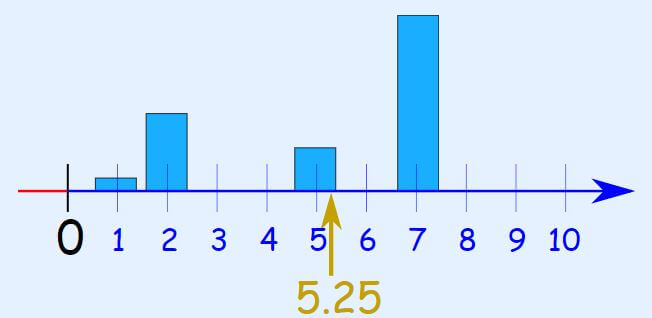
In this article, in addition to teaching arithmetic mean, we intend to answer the question of what arithmetic mean is in simple language. Arithmetic mean is the simplest and most widely used measure of average or average. It simply involves adding up a group of numbers, and then dividing that sum by the number of numbers used in the series. For example, consider the numbers 34, 44, 56, and 78. Its total is 212. Arithmetic mean is 212 divided by four or 53. People also use several other types of tools, such as the geometric mean and the harmonic mean, which are used in certain situations in finance and investing. Another example is the truncated average, which is used when calculating economic data such as the Consumer Price Index (CPI) and Personal Consumption Expenditures (PCE).
Labels: Arbitrage bot And The arbitrage robot is definitely profitable And Arbitrage bot registration And Order to build a forex robot And Building a stock trading robot And Building a trading robot And Designing a trading robot And Free forex robot And Forex robot programming And Training to make Expert Forex And Building a trading robot with Python And Download forex trading robot And Buying a forex trader robot And Automated forex robot And Free stock trading robot And How to build a forex trading robot And Download the trading robot of Iran Stock Exchange And Alpari trading robot And Forex robot for Android And Ten forex profit robot And Iran stock exchange profit robot And Forex profit expert And Profit expert of Iran Stock Exchange
What is the arithmetic mean?
The average or the simple average is basically a representative of the data set that if we present it instead of individual data, there is no change in the presented total. For example, suppose we have three numbers 2, 3 and 4, and the sum of these 3 numbers is equal to 9. Therefore, we want to replace these 3 numbers with a number that keeps the total data. It means that we are looking for an x to replace these 3 numbers and our set of numbers will be x, x and x and their sum will be equal to the sum of 2, 3 and 4 or 9. Hence, it is clear that the only number that has this characteristic is the number 3, so instead of 2, 3, and 4, we should put the numbers 3, 3, and 3. In these two cases, the sum of the numbers is preserved and the sum of each of them becomes 9. In general, to get x or the average, you have to add the numbers together and then divide by their number.
Key points of arithmetic mean training
- Arithmetic average is the simple average or sum of a series of numbers divided by the number of that series of numbers.
- The arithmetic mean is usually not a good way to calculate the mean, especially when an individual unit can skew the mean by a large amount.
- Other averages that are more commonly used in finance include the geometric and harmonic averages.
How does arithmetic mean work?
Arithmetic average also maintains its position in financial affairs. For example, the mean profit estimate is usually an arithmetic mean. Suppose you want to know the average earnings of the 16 analysts who cover a particular stock. Simply add up all the estimates and divide by 16 to get the arithmetic mean.
The same is true if you want to calculate the average closing price of a stock during a particular month. Say there are 23 trading days in a month. Simply take all the prices, add them up, and divide by 23 to get the average.
Arithmetic average is simple and most people can calculate it even with a little financial and math skills. It is also a useful measure of central tendency because it can provide useful results, even with large groups of numbers.
Arithmetic mean limits
The arithmetic mean is not always ideal, especially when an individual can skew the mean by a large amount. Suppose you want to estimate the allowance for a group of 10 children. Nine of them receive between $10 and $12 per week. The 10th child receives an allowance of $60. The calculated average is $16, which is not very representative of the group.
In this particular case, an average allowance of 10 might be a better measure.
Arithmetic averages are not great when calculating investment portfolio performance, especially when it involves compounding or reinvesting dividends. It is also generally not used to calculate current and future cash flows that analysts use in their estimates. Doing so almost always results in misleading numbers.
Arithmetic averages can be misleading when there are outliers or when looking at historical returns. The geometric mean is most appropriate for series that exhibit serial correlation. This is especially true of an investment portfolio.
Read more: Digital currency training
Arithmetic mean versus geometric mean
For these applications, analysts tend to use the geometric mean, which is calculated differently. The geometric mean is most appropriate for series that exhibit serial correlation. This is especially true of an investment portfolio.
Most returns in finance, including bond returns, stock returns, and market risk premiums, are correlated. The longer the time horizon, the more critical the combination and use of the geometric mean becomes. For volatile numbers, the geometric mean provides a much more accurate measure of true returns by taking into account year-to-year compounding.
The resulting geometric mean takes all the numbers in the series and increases it to the inverse of the series length. This is more difficult to do by hand, but easy to calculate in Microsoft Excel using the GEOMEAN function.
The geometric mean differs from the arithmetic mean or arithmetic mean in the way it is calculated (how to use the CCI) because it considers the combination that occurs from period to period. For this reason, investors generally consider the geometric mean to be a more accurate measure of return than the arithmetic mean.
An example of arithmetic mean versus geometric mean
Suppose the stock returns for the past five years are 20, 6, -10, -1, and 6. The arithmetic mean simply adds them up and divides by five, yielding an average annual return of 4.2%.
Geometric mean instead (1.2 1.0 1.06 x 0.9 9.0. 9.1. 0 1.06 1.2 1.06) 1/5 = 3.74 Average annual return calculated will be Note that the geometric mean, the more accurate calculation in this case, will always be smaller than the arithmetic mean.
Summary of arithmetic mean training
As you have noticed, the arithmetic average compared to the geometric average (what is the moving average or MA?) has disadvantages and advantages, each of which can help us with regard to the issue we need to calculate the average.








Comments (0)